All about laser levels

Modern measuring devices have become integral attributes of any construction. They are widely used in more than a wide range of jobs. It is for this reason that specialists should know everything about laser levels - devices that allow you to make markings and mark levels with minimal time and maximum accuracy in almost any conditions.



Device and characteristics
The simplest laser level is a device whose design includes a cylinder and a telescope with magnification and a sighting axis. Taking into account the location of the investigated object, the operator adjusts the pipe. It is worth noting that such a simplified device functions in conjunction with a rangefinder and a rail on which centimeter divisions are applied.
The features and types of the devices under consideration, as well as the requirements imposed on them, are enshrined in GOST 10528-90. According to this standard, each of the laser levels falls into one of the following categories:
- high-precision with a maximum quadric error of 0.5 mm per 1 km;
- accurate with an error of no more than 3 mm;
- technical, the error rate of which does not exceed 10 mm.
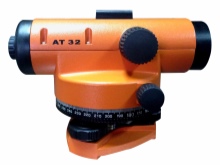


There is more than a wide range of laser levels on the market. Moreover, they all represent the layout of several systems and mechanisms, namely:
- source of laser beams;
- an optical system responsible for the construction of lines and planes;
- installation device;
- alignment mechanism;
- SP;
- controls (depending on the modification, they can be manual or remote);
- the case, which is responsible for reliable protection of all elements.

It should be taken into account that targets, as well as receivers and detectors, are used with the levels. With their help, the construction of projections from laser beams is carried out. Another important part of the design is the tripod. It is usually made of aluminum in order to lighten the overall structure as much as possible and provide sufficient strength. Such characteristics made it possible to simplify the transportation and operation of the devices.
Depending on the design features and materials used in the manufacture of the device, its weight varies in the range of 0.4-2 kg. In this case, the length, width and height of the level are 12-200, 110-140 and 120-220 mm, respectively.


Operating principle
The operation of the device is based on the formation of projections of laser beams. The latter are focused using an optical system, which allows you to project lines and points on the desired object. Similar landmarks are used for marking when performing various works.
At its core, any laser level is an optical electromechanical device that visually displays planes, lines and individual points on different surfaces... They are located strictly vertically or horizontally, as well as at a specific angle.
The functions of radiation sources in the levels are performed by powerful LEDs. These semiconductors create a monochromatic stream with increased density and specific wavelength.
Moderate heat dissipation and low power consumption will be important factors.
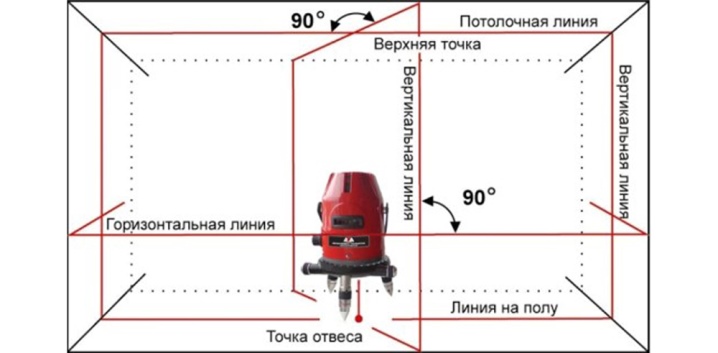
How is it different from the level?
It is not uncommon to compare levels and levels based on the properties of laser beams. As practice shows, laser levels have become indispensable devices. They have fully proven their maximum efficiency in the construction of vertical, horizontal, inclined planes and right angles. As a result, such modern devices were able to successfully replace conventional levels, plumb lines, rules and squares.
Unique performance indicators, technical characteristics and design features have provided laser levels with more than a wide range of applications. These devices are effective both in small premises and outside buildings and structures. Some models are capable of building projections at a distance of up to several hundred meters.
In turn, a laser level is an instrument with a marker in the form of a thin beam... Its principle of operation is based on the construction of lines by two points.
It is worth noting that three points are used in situations with levels.


One of the key differences between the two tools is range. So, at cheap levels, this indicator most often does not exceed 10 meters. More expensive modifications are capable of measuring up to 25 meters. Similar indicators of levels are much higher (from 50 to 100 meters and more). It is worth considering that the parameter under consideration is directly influenced by lighting.
Another important point is the differences in the tool alignment mechanisms. As a rule, the device notifies the operator even with the smallest deviations (tenths of a degree). Levels and levels have different indicators of the deviations recorded by the automation. In the first case, we are talking about the range of 3-35 mm, and in the second - 3-50 mm.

Advantages and disadvantages
Lasers are equally effective on large construction sites, landscaping and home decoration. but for individual use, such devices are rarely purchased... This is due to their relatively high cost. At the same time, it should be borne in mind that we are talking about high-tech devices characterized by functionality and versatility, which fully justifies their price.

The main advantages of all modifications of laser levels include the following important points:
- maximum accuracy of the measurements performed (the error does not exceed a few tenths of a millimeter per meter);
- laser points and lines are clearly visible on any surfaces, which allows you to work directly on them;
- the presence of self-leveling devices maximally simplifies the operation of the device and reduces the time spent on preparing it for operation;
- to operate laser levels, no special training is required and basic knowledge and skills will be sufficient;
- you can use the tool without the help of a partner, which in itself simplifies, for example, performing minor repairs on your own;
- Levels are effective for plotting planes and lines over large areas.
As you know, nothing is perfect, and the described devices, of course, are no exception. However, professional laser levels have, perhaps, the only significant disadvantage. And in this case we are talking about their cost. Depending on the characteristics of the device, it can vary from $ 20 to $ 1000.



Types
Today, in the corresponding segment of the measuring equipment market, there is a fairly wide range of instruments for constructing lines and projections. The key factor here is the operational capabilities of the instruments. So, there are the following types of levels with a laser beam.
- Point devices designed for plotting axes. They display from 3 to 5 points in different planes at a fairly large distance from each other.
- Crossliners or line levels.Based on the name, you can understand that they are used to draw lines.
- Rotary or plane builders. In terms of functionality, they are similar to crossliners. In this case, we are talking about a 360-degree rotation of planes using a complex optical system.
Knowing the main characteristics, it is easier to choose a specific model of the measuring tool. An equally important point will be the features of the operating conditions and the work performed for which the device will be used.



Important characteristics
For the correct choice of any tool, including laser levels, one should have an idea of its main and most significant parameters. They, in particular, determine the functional indicators and the scope of the devices.
It should be borne in mind that in addition to the main parameters, it will be useful to pay attention to a number of additional characteristics... On the one hand, they practically have no effect on the measurement accuracy.
However, such design features and additional functions are focused on simplifying the operation of equipment.

Laser level type
In practice, the best option is to use a green laser beam that can be perceived by the human eye as much as possible. At the same time, devices with red beams are more affordable. They can pose some problems in bright light.
The most rational way out would be to use receivers and special glasses, which significantly improve the visibility of points and lines. By the way, glasses are effective protection of the retina from direct exposure to rays. It should be borne in mind that modern devices do not pose a health hazard, but it does not hurt to play it safe, especially when it comes to professional levels with a large radius of action.


Number of beams
The simplest models produce no more than two beams, which is sufficient for some work. We are talking, in particular, about decoration, marking of walls and ceilings, as well as the assembly and installation of furniture. The main advantage of such models is their relatively low cost.
Complex operations, the list of which includes the construction of partitions, leveling planes and many other works, involve the use of more expensive models. This is due to the need to build at least two intersecting planes.
Professionals in their work use levels that can build the most complex models from several planes.



Projection distance
In this case, we mean one of the main parameters and key selection criteria. The vast majority of budget models are capable of spreading laser beams no more than 20 meters. As practice shows, this is quite enough to carry out repair and finishing work within an apartment or a cottage and even mark the foundation for a house. Naturally, such indicators are losing their relevance at large construction sites.
It is important to remember that to significantly increase the range of the devices allow special receivers... These additional hardware samples are usually purchased separately. The described parameter in situations with models used in conjunction with receivers is indicated by a fraction. For example, the designation 50/100 indicates that the maximum beam propagation range without and with additional equipment is 50 and 100 m, respectively.


Number of projections
Of course, multifunctional, versatile appliances are the ideal choice. However, one should take into account the peculiarities of their operation. An important criterion in this case will be the cost of the measuring device.
When analyzing the performance of a multiprism level, it is necessary to take into account a number of basic characteristics and additional capabilities.
Experienced experts advise checking the options for activating and deactivating the projected lines, that is, changing their number. In practice, often unnecessary laser beams can create certain inconveniences.
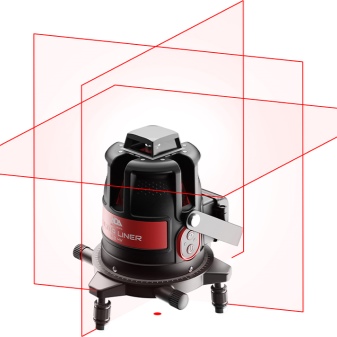

Error
Each sample of measuring equipment has a certain error. Naturally, the described type of modern levels is no exception in this case. In other words, the rays can deviate from the position of the ideal straight line. The error is measured in millimeters per meter. By the way, in situations with high-precision models, this figure is a fraction of a millimeter, and for budget models - up to 3-4 mm.
On the one hand, the smaller the error, the better. At the same time, an important role is played by the features of the work in the course of which the levels are used.
In some cases, a deviation of a few millimeters can be assessed as insignificant.

Operating temperature
When working in warm weather or indoors, this parameter is practically irrelevant. In accordance with the instructions and recommendations of the manufacturers, laser levels are best used at temperatures ranging from +5 to +40 degrees. When performing work outdoors, certain nuances should be taken into account.
Instrument designers take into account the fact that levels are used in many operations all year round. As a result, "frost-resistant" modifications can now be found on the market. These devices are capable of effectively performing their functions at temperatures down to -10 degrees.
There are also more durable devices, but they are produced in limited quantities and often on special orders.

Working hours
The service life of electronic laser devices directly depends on their quality and the power sources used. This indicator, as a rule, is indicated in the technical documentation included in the delivery set of each laser level. It should be borne in mind that we are talking about the operating time of the device with fully charged batteries.
As practice shows, the need for a long (many hours) continuous operation of levels is rarely encountered. It is quite possible to recharge the battery during breaks in work.
It is important to take into account that this is relevant for nickel-metal hydride batteries that do not have a pronounced "memory syndrome". In situations with nickel-cadmium batteries, the instrument must be used before they are completely discharged.
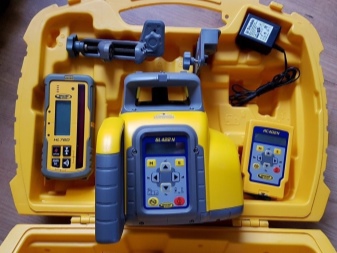

Mount types
The laser level can be installed on any horizontal surface. In addition, the use of the following devices is provided.
- Special tripods most often used for outdoor use. But even indoors, they are sometimes relevant. We are talking, in particular, about the installation of hinged furniture.
- Magnets that are integrated directly into the housings of some models and allow you to securely attach the levels to metal surfaces.
- Magnetic stands. This refers to plastic platforms with magnets, which are supplied with individual modifications of measuring instruments. The device is installed on a metal surface and the tool itself is attached to it.



Self-leveling
The accuracy of measurements and construction of projections directly depends on the correct position of the device itself. Budget models in the overwhelming majority of cases are equipped with a conventional bubble-type level. According to his testimony, experts set the level before use.
More expensive and professional devices are self-leveling, that is, they have a self-leveling function. When deviating from the vertical (most often up to 4 degrees), the mechanism adjusts the mirrors and prisms in automatic mode. If the maximum stipulated angle is exceeded, the user is alerted by a sound or light signal, as well as by switching off the laser beams.

Device protection class and shockproof housing
In this case, operating conditions will be the key criterion. First of all, we are talking about performing work on the street. The protection class of the body of the level is indicated by the letters IP and two numbers. For outdoor use, the device must be marked from IP54.
The specified parameter shows the level of protection of the device against dust and moisture penetration. For indoor use, models with a minimum IP are suitable. It is important to remember that the cost of equipment also depends on the protection class.



Rating of the best models
Nowadays, a potential buyer has access to more than a wide range of products from leading manufacturers. You can buy both budget and professional devices. However, some find it difficult to navigate the existing diversity. Ratings of the most popular samples of a measuring instrument come to the rescue in such situations. Such lists include the following models.
- Condtrol Unix 360 Set - professional laser level with projection of planes at 360 degrees and a range of beams up to 80 m.
- Ada Ultraliner 360 2V - a universal device with a combined sweep of beams and capture of a horizontal plane within 360 degrees.
- Bosch Gll 3-50 Professional - a model capable of projecting one horizontal and two vertical planes at once. The device is effective for marking the ceiling, installing communications, leveling surfaces and performing many other works. The measurement range, provided that the receiver is used, is only 50 m.
- DeWalt DW 079 PKH - self-leveling level with good performance. The device allows you to build inclined planes, and the range of its action reaches 300 m.
- Defort DLL-10MT-K - a budget model characterized by high quality and functionality. Distinctive features are accuracy and 10-meter beam range.
- Bosch GRL 300 HV - one of the best models of levels related to the rotary category.
- Bosch GPL 5 - a point device with a range of up to 30 m, capable of projecting horizontal and vertical planes with maximum accuracy.

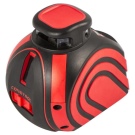
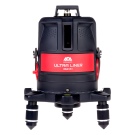



Selection Tips
If you need to choose a level for outdoor use or for building a house, it is recommended to study the most important characteristics of different types of equipment. In this case, special attention must be paid to the following important criteria.
- Features of the construction of rays. We are talking about horizontal, vertical and circular lines, as well as points and crosses.
- Range is a parameter that displays the maximum distance within which the laser markers will be clear.
- Leveling accuracy, that is, the range of the maximum deviation of the projection from the actual position.
- Beam parameters that determine the versatility of the measuring tool.
- The presence of a laser plummet - a device that ensures the alignment of surfaces in a vertical plane.
- The ability to use the device at an angle.
- The presence of a scanning mode that makes the beam visible at a maximum distance. This option is usually found in expensive professional levels.
In addition to all of the above, it is necessary to take into account the level of protection of the device case. An equally important factor will be the operating temperature range. This is most relevant if it is used outdoors. Some models are additionally equipped with a swivel base.



Operating rules
Before starting work, it is required to clearly determine the type of level. The preparatory stage, as a rule, is as simple as possible, does not cause any difficulties and looks like this.
- When using rechargeable models, you must first fully charge the battery.
- In situations with levels operating from conventional batteries, you should take care of their availability and correctly install these batteries.
- The key point is checking the performance of the equipment. After switching it on, a laser beam should appear immediately.

The accuracy of drawing lines and projection directly depends on the location of the device. Based on this, you need to find the most suitable place to install the level. In addition, the following key requirements need to be considered.
- There must be no obstacles in the path of the laser beams.
- The distance from the radiation source to the object should be optimal.
- During operation, the level is placed on a flat surface, on a tripod or a special stand (bracket).
- Align the instrument before starting work. Self-leveling models are an exception.
When taking measurements outdoors in sunny weather, the use of special glasses is highly recommended. The latter are included with some models.

Review overview
On the vastness of the World Wide Web, you can easily find reviews of laser levels. They are published by both experienced professionals from various industries and ordinary people who have used such devices for domestic purposes. It should be noted right off the bat that the vast majority of comments are positive.
Judging by the reviews, the considered measuring devices constantly prove their effectiveness in performing more than a wide range of operations... These include construction and finishing work, installation of interior elements and equipment, landscape design, and more. At the same time, many users focus on the increased accuracy of the levels and the minimum error.

An equally important point is the range of the devices. They allow you to build planes, as well as lines, including circular ones, at a considerable distance. Special attention in the reviews is paid to the characteristics of self-leveling models, which are distinguished by maximum ease of use.
The disadvantage of most of the authors of reviews is the fairly high cost of the levels. However, this disadvantage can be minimized by a competent approach to the choice of the device. The key criterion in this case will be the specificity of the use of the measuring tool.
As practice shows, even affordable Chinese models often become an example of the optimal ratio of cost and quality.
See below for how the laser works.













The comment was sent successfully.